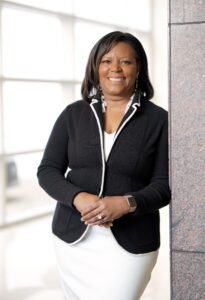Closing the gap

One of the cruelest but most constructive lessons of the pandemic was how it exposed the yawning gap between the haves and have-nots.
Very early on it became evident that those who did not speak English well or had limited access to the internet, telemedicine or even routine health care were likely to be hit harder by the coronavirus. A creative approach was needed to meet the needs of these patients.
“At one point, more than half of the people who were hospitalized with COVID-19 spoke another language,” said Consuelo Wilkins, MD, MSCI, VUMC’s Senior Vice President for Health Equity and Inclusive Excellence and Senior Associate Dean for Health Equity and Inclusive Excellence for the School of Medicine.
“We’ve done a really great job over the past five to 10 years in recruiting more diverse medical students as well as residents, fellows and other clinical trainees,” Wilkins said. The pandemic “really highlighted how important it is to have diversity in our staff as well — individuals who are not only bilingual but also bicultural.”
Low socioeconomic status is another hurdle to health care access and equity. Ninety-five percent of VUMC’s general pediatrics population is on TennCare, the state’s Medicaid program for low-income and uninsured people.
“Another lesson for our training program was not only the importance of teaching health equity but the importance of addressing the social determinants of health in every patient encounter,” said John McPherson, MD, the Drs. Sol and Marvin Rosenblum Professor of Medicine.
“When you’re in the ICU … you can’t address them at that point. It’s too late,” he added. “But when you’re seeing patients … in the clinics, that’s when you can address it by asking questions about their resources and understanding what their needs might be.”
Added David Aronoff, MD, Addison B. Scoville Jr. Professor of Medicine and director of the Division of Infectious Diseases: “People ask me a lot, ‘What should we do to prepare for the next pandemic?’”
Beyond maintaining adequate supplies of personal protective equipment, “the best preparation … is to improve the health of our communities,” he said. “There is going to need to be a way to envision a new normal where health disparities and health inequities are minimized.”
